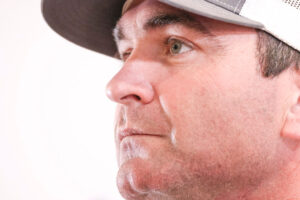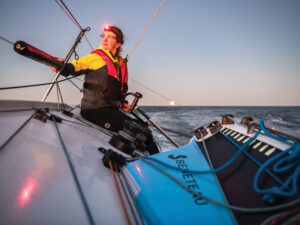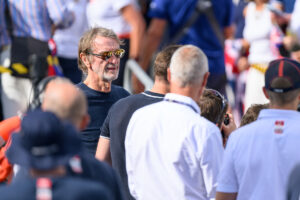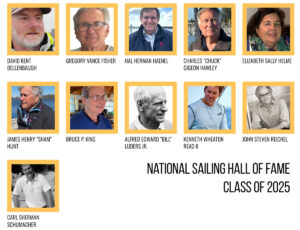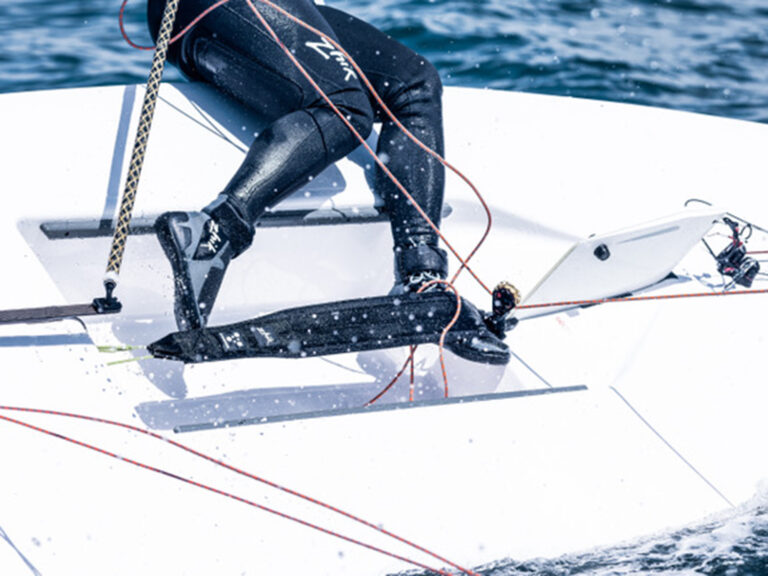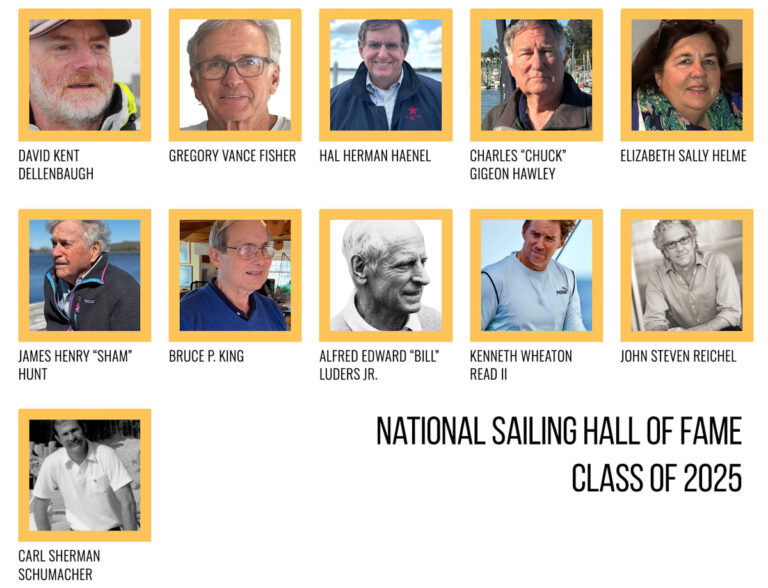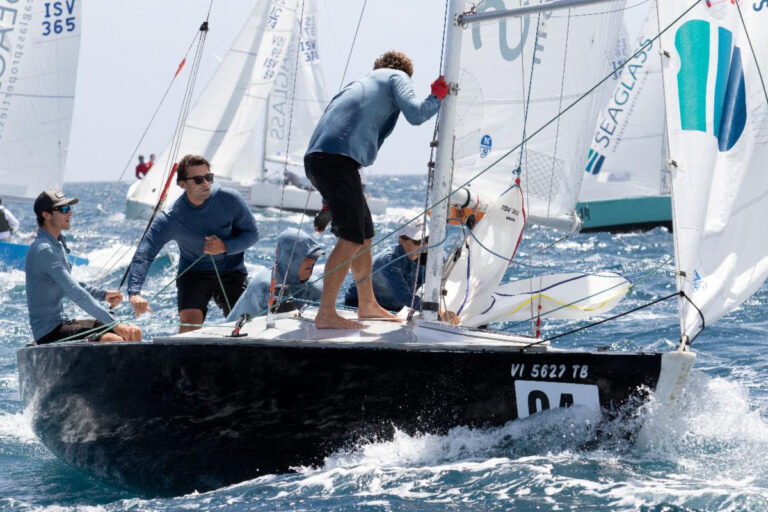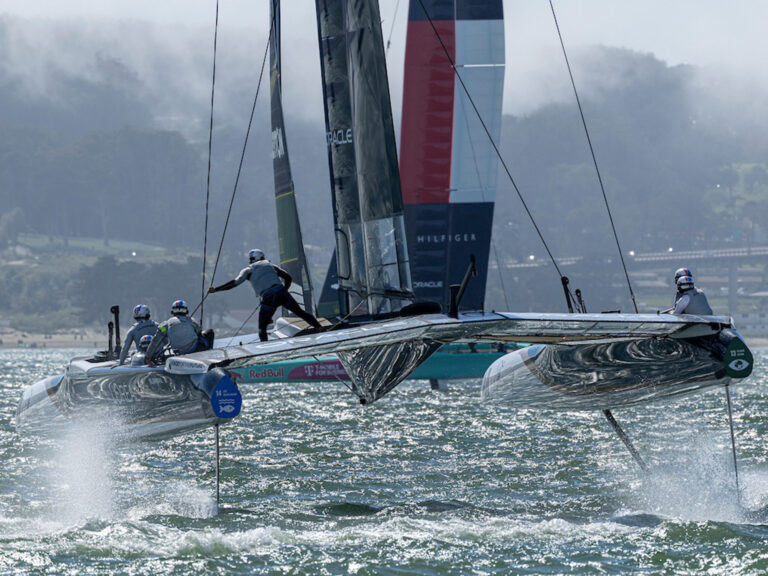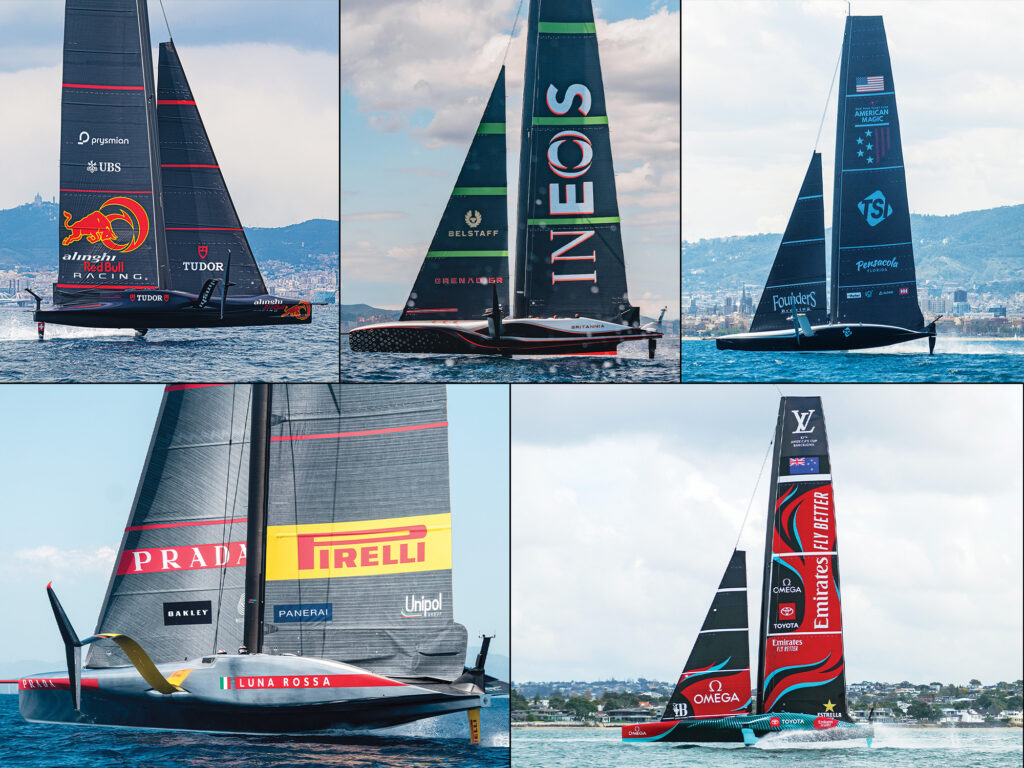
April began with new-boat reveals that highlight the innovations of the second-generation AC75s for the Louis Vuitton 37th America’s Cup. While similar in size and scale, no one boat is alike.
Alinghi Red Bull Racing, of the Swiss camp, was first to show its AC75, BoatOne, in a theatric soiree, giving observers and other teams a peek at the boat’s design traits. Its straight and narrow bow profile transitions to a long and tapered bustle that goes all the way to the stern. The walls of BoatOne’s tall crew pods stop sharply before the transom section, leaving what amounts to a long overhang to accommodate the internal rudder elements. Bumps sculpted into the foredeck are said to redirect wind flow into the jib and down the middle of the boat for aerodynamic gains.
America’s Cup defender, Emirates Team New Zealand, was next to reveal, with a soft launch, followed by a foiling session the following day. With a naming ceremony that came a week later, the Kiwis’ AC75, Taihoro, was blessed for action, and they went straight into sailing in Auckland. Unlike the high cockpit walls of Alinghi’s BoatOne, however, those of Taihoro taper down toward to the transom scoop, which houses the mainsheet traveler system in a trench, and the rudder assembly.
The following day in Cagliari, the Italians of Luna Rossa Prada Pirelli rolled out their metallic silver AC75, a menacing-looking design that has its pronounced curves and a significant bustle which rises toward the stern. The boat’s tall cockpits produce a deep trench through the middle of the boat.
INEOS Britannia was fourth from behind the curtain with a boat dubbed RB3. It’s different enough from Alinghi’s and ETNZ’s AC75s to be dangerous. The plumb bow starts sharp and maintains a steep deadrise before flaring out to a flatter bottom. A pronounced bustle tapers off near the stern and transitions to a thin skeg that ends short of the rudder.
The New York YC’s American Magic revealed its boat, Patriot, in early May, blessing it and going sailing on the same day. It’s certainly a different look, summarized by the team’s design coordinator, Scott Ferguson. “We followed our own design path with Patriot as we pushed the limits of the AC75 rule while tailoring for the Barcelona venue,” he says. “Our overall philosophy is minimalistic, as we’ve tried to squeeze down our volumes to the base minimum while still fitting the crew and systems into the boat.”
With the French Orient Express Racing Team pulling from Team New Zealand’s design package, there’s an expectation that its platform will not be too far off the defender when it comes to light soon enough. It had not yet been launched at press time.
In terms of crew-pod assignments, cyclors have now taken the back seats, mostly concealed and out of the airstream, while trimmers and helmsmen take the front seats for a better view of the action. American Magic went to the extreme, positioning three pods inboard, two well aft in the boat, with cyclors on recumbent bikes.

